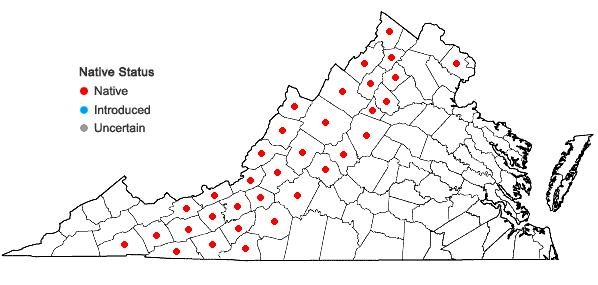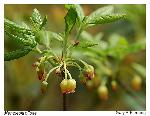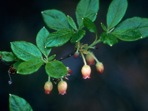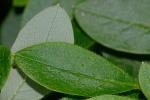Rhododendron pilosum (Michx.) Craven

Detail
- Family
- Ericaceae
- Botanical Name
- Rhododendron pilosum (Michx.) Craven
- Common Name
- Minniebush
- Synonym(s)
- Menziesia pilosa (Michx. ex Lam.) Juss. ex Pers.
- Flora of Virginia Name/Status
- Menziesia pilosa (Michx. ex Lam.) Juss. ex Pers.
- Comments
- We have chosen, for the time being, to include Menziesia within Rhododendron, as is the trend now due to several molecular phylogenetic papers that show Menziesia nested within Rhododendron. None of these studies, however, are able to determine where within Rhododendron Menziesia fits. Alternatively, there are good reasons to recognize Menziesia on morphological and biogeographical grounds. The morphological ones are obvious from the key to Rhododendron species in the Flora of the Southeastern U.S. (Weakley et al. 2024). Biogeographically, Menziesia is similar (but with a western North American species) to some 65 genera that exhibit disjunct distributions between eastern Asia and eastern North America. This well-studied pattern is believed to be an ancient one resulting from disruption of the widespread distribution of temperate forest elements in the northern hemisphere during mid-Tertiary. Menziesia and Rhododendron lineages were distinct, then, from the middle Miocene, or earlier. Despite their long separation, the one study that included both Asian and North American species of Menziesia (Goetsch, et al., 2005; Syst. Bot. 30: 616-626) joined the two with 100% bootstrap support. By contrast, the Menziesia clade is joined to the next nearest Rhododendron clade with far less support (63% or less). Another study including only one species of Menziesia shows even less support (Kurashige et al. 2001, Pl. Syst. Evol. 228: 1-14). Ancestral taxa often present difficulties in molecular studies. This is of particular relevance here as noted in Jun Wen's paper, Evolution of Eastern Asian and Eastern North American Disjunct Distributions in Flowering Plants (1999, Ann. Rev. Ecol. Syst. 30: 421-455 (1999). Here she states:
"Some traditionally recognized disjunct taxa have recently been shown to be paraphyletic ... or polyphyletic .... Thus, these taxa are based on symplesiomorphies or evolutionary convergences. [Symplesiomorphies are ancestral characters shared by two or more lineages in a clade. The shared nature of a symplesiomorph character state is not evidence that the taxa in question are related.] The extent of paraphyly and polyphyly needs to be examined, and taxonomic reevaluations need to be made based on phylogenetic evidence." [Bracketed text added for clarity]
- Habitat
- Mesic to dry, acidic forests, shrub balds, rock outcrops, sphagnous seepage swamps, forested depressions, bogs. Common in the mountains but apparently absent from the Ridge and Valley and Cumberland Mountains of far sw. Virginia; very rare in the Piedmont.
- Native Status
- Native
To save this map, right-click (control-click for Mac users) on the map and choose "Save Image As...".



